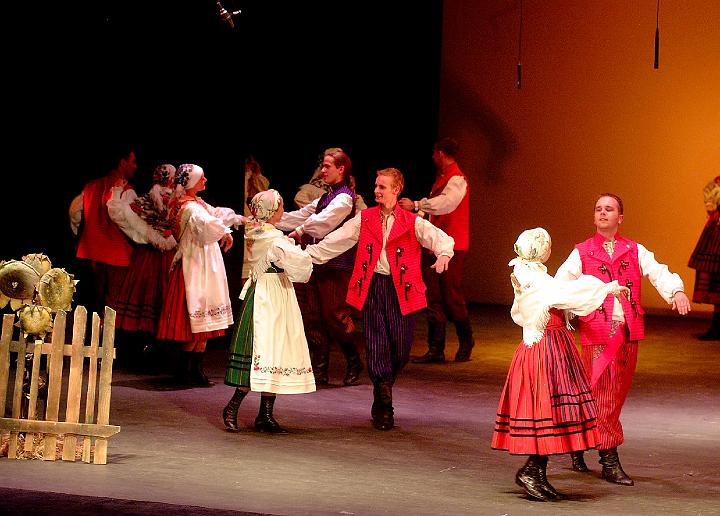
The mazurka (in Polish, mazurek) is a Polish folk dance in triple meter, usually at a lively tempo, and with accent on the second or third beat.
HISTORY
The folk origins of the mazurek are two other Polish musical forms—the slow kujawiak, and the fast oberek. The mazurek is always found to have either a
triplet, trill, dotted eighth note (quaver) pair, or an ordinary eighth note
pair before two quarter notes (crotchets). In the 19th century, the
dance became popular in many ballrooms in different parts of Europe. The Polish national anthem has a mazurekrhythm but is too slow
to be considered a mazurek.
There are many Polish versions of the mazurek but the most notable one is the
mazurka.
In Polish,
this musical form is called "mazurek"—a word derived from
"mazur," which up to the nineteenth century denoted an
inhabitant of Poland's Mazovia region, and which also became the root
for "Masuria".
In Polish, "mazurka" is actually the genitive andaccusative cases of "mazurek."
Several classical composers have written mazurkas, with
the best known being the 69 composed by Frédéric Chopin for
solo piano.Henryk
Wieniawski also wrote
two for violin with piano (the popular "Obertas", Op. 19), and in the
1920s, Karol
Szymanowski wrote a
set of twenty for piano and finished his composing career with a final pair in
1934. Also, Maria Szymanowska wrote mazurkas long before Chopin.
Chopin first started composing mazurkas in 1825, but his
composing did not become serious until 1830, the year of the November
Uprising, a Polish rebellion against the Russian government. Chopin
continued composing them until 1849, the year of his death. The stylistic and
musical characteristics of Chopin's mazurkas differ from the traditional
variety because Chopin in effect created a completely separate and new genre of
mazurka all his own. For example, he used classical techniques in his mazurkas,
includingcounterpoint and fugue. By including more chromaticism and
harmony in the mazurkas, he made them more technically interesting than the
traditional dances. Chopin also tried to compose his mazurkas in such a way
that they could not be used for dancing, so as to distance them from the
original form.
However, while Chopin changed some aspects of the original
mazurka, he maintained others. His mazurkas, like the traditional dances,
contain a great deal of repetition: repetition of certain measures or groups of
measures; of entire sections; and of an initial theme. The rhythm of his mazurkas also remains
very similar to that of earlier mazurkas. However, Chopin also incorporated the
rhythmic elements of the two other Polish forms mentioned above, the kujawiak and oberek;
his mazurkas usually feature rhythms from more than one of these three forms (mazurek, kujawiak, and oberek). This use of rhythm
suggests that Chopin tried to create a genre that had ties to the original
form, but was still something new and different.


No comments:
Post a Comment